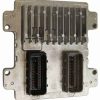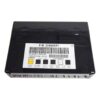Restore Your Vehicle’s Heartbeat and Your Peace of Mind
Is your vehicle leaving you stranded with a stubborn check engine light, erratic performance, or a frustrating no-start condition? The Powertrain Control Module (PCM) is the brain of your engine, and when it falters, it can feel like the entire car is giving up. Don’t let a faulty computer dictate your day. This direct-fit PCM, service number 12597125, is the definitive solution to get you back on the road with confidence. We take the guesswork and expense out of the equation by pre-programming it specifically to your vehicle’s VIN with the latest GM software updates. It arrives at your door ready for a straightforward installation, saving you a costly trip to the dealership.
Warning Signs and How to Overcome Them
A failing PCM can manifest in numerous ways. Recognizing the symptoms is the first step toward a lasting solution. This module is engineered to resolve these common headaches and restore the crisp, reliable performance you depend on.
- ✔ Persistent Check Engine Light: Clears stubborn codes related to module communication or internal processor faults (e.g., P0601, P0606).
- ✔ Poor Engine Performance: Eliminates issues like rough idling, hesitation during acceleration, and unexpected stalling.
- ✔ Reduced Fuel Economy: Restores precise fuel and timing calculations, bringing your MPG back to factory standards.
- ✔ No-Start or Intermittent Starting: Solves frustrating scenarios where the engine cranks but refuses to start, or only starts when it feels like it.
- ✔ Failed Emissions Testing: Ensures all engine parameters are operating correctly so you can pass your inspection with ease.
- ✔ Communication Errors: Fixes Diagnostic Trouble Codes like U0100 (Lost Communication With ECM/PCM).
An Expert’s Note: From Frustration to Freedom
“I remember a customer, a single mom with a Chevy HHR, who was quoted over a thousand dollars at the dealership for a new computer and programming. Her car was stalling unpredictably, and she was terrified to drive her kids in it. She was about to give up on the car. We sent her one of these pre-programmed modules. She called back a few days later, ecstatic. With a basic socket set and our guidance, her brother-in-law had swapped it in 30 minutes. The car ran perfectly. It’s not just about selling a part; it’s about giving people the power to fix their own vehicle and regain that essential feeling of safety and independence.”
Guided Installation to Restore Peak Performance
You don’t need to be a master mechanic to complete this repair. With a few basic tools and a little patience, you can have your vehicle running like new. This is a general guide; the exact location of your 2008-2010 VUE PCM or other compatible model may vary slightly.
- Safety First: Always disconnect the negative terminal of your vehicle’s battery and wait at least 10 minutes to allow the system to fully discharge. This prevents electrical damage and ensures your safety.
- Locate the Old Module: The PCM is often found in the engine bay, either on the firewall, near the battery, or as part of the air cleaner assembly. It will be a metal box with several large wiring harness connectors.
- Disconnect and Remove: Carefully unplug the wiring harnesses. Most have a locking tab or lever that needs to be released. Once disconnected, unbolt the old module from its mounting bracket and remove it from the vehicle.
- Install the New PCM: Mount your new, pre-programmed PCM securely in place of the old one. Reconnect the wiring harnesses, ensuring they click firmly into place. A clean, secure connection is critical.
- Final Steps: Reconnect the negative battery terminal. The vehicle may need to go through a security relearn procedure, which is often as simple as turning the key to the ‘On’ position for 10-15 minutes before starting. Your vehicle is now ready to go!
Tailored Fit for Your Ride
This module is a direct replacement for service number 12597125 and is compatible with a wide array of General Motors vehicles. Please verify your model and engine options below. After purchase, you must provide your VIN so we can ensure perfect programming for your specific vehicle.
- AURA (2008-2009): 2.4L, w/o hybrid
- COBALT (2007-2010): 2.2L, 2.4L (verify VIN digit)
- EXPRESS 1500 VAN (2008-2009): 4.3L
- G5 (2007-2010): 2.2L
- G6 (2008-2010): 2.4L
- HHR (2007-2011): 2.2L, 2.4L
- IMPALA (2010-2011)
- LUCERNE (2009-2011): 3.9L
- MALIBU (2007-2012): 2.2L, 2.4L, 3.5L (Classic & New Styles)
- SAVANA 1500 VAN (2008-2009): 4.3L
- SIERRA 1500 PICKUP (2007-2009): 4.3L (New Style)
- SILVERADO 1500 PICKUP (2007-2009): 4.3L (New Style)
- SKY (2008-2010): 2.4L
- SOLSTICE (2008-2010): 2.4L
- VUE (2008-2010): 2.4L
Frequently Asked Questions
Do I need to get this PCM programmed by a dealer?
No! That’s the primary benefit of our service. We program the module to your vehicle’s specific VIN before we ship it. This means it’s ready for installation right out of the box, saving you hundreds in dealership programming fees.
What is a VIN and why do you need it?
The VIN, or Vehicle Identification Number, is a unique 17-digit code for your car. It contains vital information about your vehicle’s engine, transmission, and factory options. Providing us with your VIN allows us to load the exact correct software from GM, ensuring flawless compatibility.
Is this a difficult part to install myself?
For most DIYers with basic hand tools, this is a very manageable job. The most important steps are disconnecting the battery and ensuring the connectors are clean and securely seated. Our installation guide provides the key steps to follow for a successful repair.
What happens if I don’t provide my VIN after purchase?
We cannot ship the module until we receive your VIN. The programming is a critical step to ensure the part works with your vehicle. We will contact you after your purchase to request the VIN to avoid any delays.
Will this fix my specific check engine light codes?
This PCM is a direct solution for codes related to internal module failure (like P0601-P0606) or communication faults. While it can resolve many other performance-related codes, it’s always best to diagnose the underlying cause. If the code points to a bad sensor, for example, that sensor should be addressed as well.


